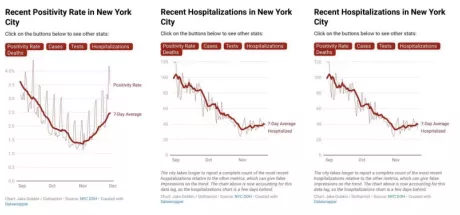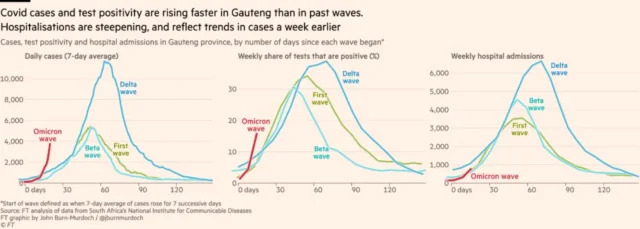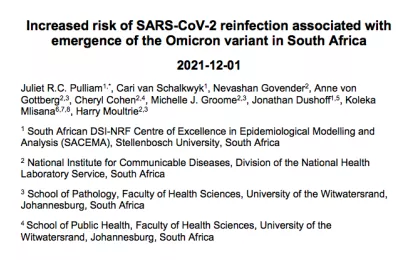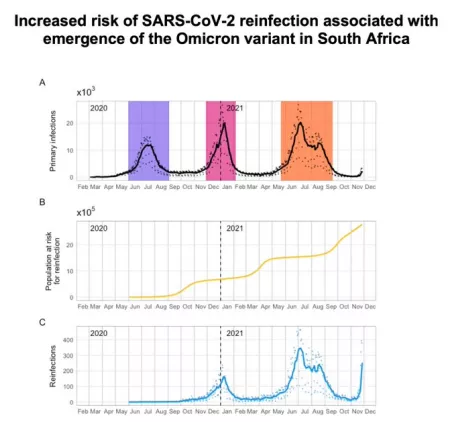Omicron will break through the immune barrier and increase the risk of re-infection
- Normal Liver Cells Found to Promote Cancer Metastasis to the Liver
- Nearly 80% Complete Remission: Breakthrough in ADC Anti-Tumor Treatment
- Vaccination Against Common Diseases May Prevent Dementia!
- New Alzheimer’s Disease (AD) Diagnosis and Staging Criteria
- Breakthrough in Alzheimer’s Disease: New Nasal Spray Halts Cognitive Decline by Targeting Toxic Protein
- Can the Tap Water at the Paris Olympics be Drunk Directly?
Omicron will break through the immune barrier and increase the risk of re-infection
- Should China be held legally responsible for the US’s $18 trillion COVID losses?
- CT Radiation Exposure Linked to Blood Cancer in Children and Adolescents
- FDA has mandated a top-level black box warning for all marketed CAR-T therapies
- Can people with high blood pressure eat peanuts?
- What is the difference between dopamine and dobutamine?
- How long can the patient live after heart stent surgery?
Omicron will break through the immune barrier and increase the risk of re-infection.
The COVID-19 Omicron strain has spread in the United States, and the latest paper reveals that it will break through the immune barrier and increase the risk of secondary infection
With the advent of autumn and winter, sporadic cases of COVID-19 pneumonia will appear from time to time.
In addition, the “strongest” COVID-19 mutant Omicron has also begun to spread in more than 20 countries and regions around the world.
At present, the COVID-19 mutant Omicron has appeared in 4 states in the United States. The key is that it may have spread in the community in New York State.
Among the first 5 cases of infection, except for 1 person who came back from South Africa, the other 4 people The route of infection is unknown.
The Omicron strain has begun to spread in American communities
When the United States was hesitant to close the country, the COVID-19 mutant Omicron did not hesitate at all.
At present, the mutant has quietly spread in the United States and has spread to at least 3 states in the United States, including 1 case in California and 5 cases in New York (among which One person has just returned from South Africa, and the other four have unknown route of infection) ; one case in Minnesota.
According to reports, this patient in Minnesota who was infected with the Omicron mutant was infected after participating in an event from New York.
The infection time was on November 22. It can be seen that the Omicron mutant may have spread in communities in New York State.
 As early as a day ago, Fauci believed that Omicron had not yet arrived in the United States, as everyone knew it had spread in the American community.
As early as a day ago, Fauci believed that Omicron had not yet arrived in the United States, as everyone knew it had spread in the American community.
According to data from South Africa, the earliest time that the COVID-19 Omicron mutant can be traced is November 9th.
Since the United States did not impose a travel ban on South Africa, many people entered the United States from South Africa during this period, especially in metropolises such as New York.
It is inevitable to import new mutant strains. New York became the epicenter of the COVID-19 epidemic last year.
With large-scale testing, the number of people infected with new mutant strains in the United States may further rise, and community infections are inevitable.
At present, the United States has imposed travel bans on South Africa and other countries, but has not taken further blockade measures in the United States, but has adopted more extensive testing and vaccinations.
Yesterday, Biden flew to the National Institutes of Health (National Institutes of Health) to explain the need to provide more tests and vaccines and other new measures to combat the COVID-19 and Omicron mutants.
In addition, he also strongly supports the vaccination of children under five years of age.
This is because the existing data shows that the Omicron mutant will cause more children to be infected with the COVID-19.
Previously, the proportion of other types of COVID-19 virus infections in children was not high.

In addition to facing the threat of Omicron mutants, the United States is still deeply involved in the COVID-19 epidemic caused by the Delta strain.
At present , there are nearly 100,000 new cases every day, which mainly occurs in groups in the United States that have not received the COVID-19 vaccine .
In the United States, there is a group of people who oppose vaccination.
It is very difficult to persuade them to get the vaccine, which keeps the number of people infected with the COVID-19 in the United States high.
Due to the low proportion of people who are vaccinated and an effective immune barrier has not yet been established (in fact, vaccines are not effective against new strains) , it will be sooner or later that Omicron mutants will spread in American communities.
What’s more worth mentioning is that it also increases the risk of secondary infection and spreads faster than the Delta mutant.
The Omicron strain causes a surge in South Africa’s COVID-19 infections, increasing the risk of secondary infections
 From left to right, respectively are 1) the growth rate of the Omicron mutant strain, 2) the number of people who are positively infected with the COVID-19, and 3) the number of hospital admissions
From left to right, respectively are 1) the growth rate of the Omicron mutant strain, 2) the number of people who are positively infected with the COVID-19, and 3) the number of hospital admissions
 Omicron mutant causes a surge in South Africa’s COVID-19 patients
Omicron mutant causes a surge in South Africa’s COVID-19 patients
At present, the number of COVID-19 infections in South Africa is rising rapidly, at least the current growth rate has exceeded the Delta mutant strain.


On December 1, researchers from the field of public health in South Africa published a paper on the preprint medRxiv: The emergence of Omicron mutants in South Africa increases the risk of secondary infection of COVID-19 pneumonia .
Although this paper has not been peer reviewed, the credibility of this kind of purely data analysis article is very high even if it has not been peer reviewed.
The article analyzes that since the beginning of 2020, South Africa has experienced at least 3 rounds of COVID-19 infection peaks. In fact, this is mainly caused by different COVID-19 mutants. As the Omicron mutant spreads in South Africa, there is a risk of secondary infection. Will also increase dramatically.
Therefore, the authors concluded that population-level data analysis showed that Omicron mutants are likely to evade the immune barrier established by previous infections and cause secondary infections.
The main reason for immune escape is that it has 26-32 mutation sites in the S protein, which is different from the previous new coronavirus mutant strains, which has caused the preventive effect of the previous vaccine designed based on the S protein to be greatly reduced.
This is also a huge challenge facing the global COVID-19 pharmaceutical companies.
Omicron will break through the immune barrier and increase the risk of re-infection
(source:internet, reference only)
Disclaimer of medicaltrend.org
Important Note: The information provided is for informational purposes only and should not be considered as medical advice.



